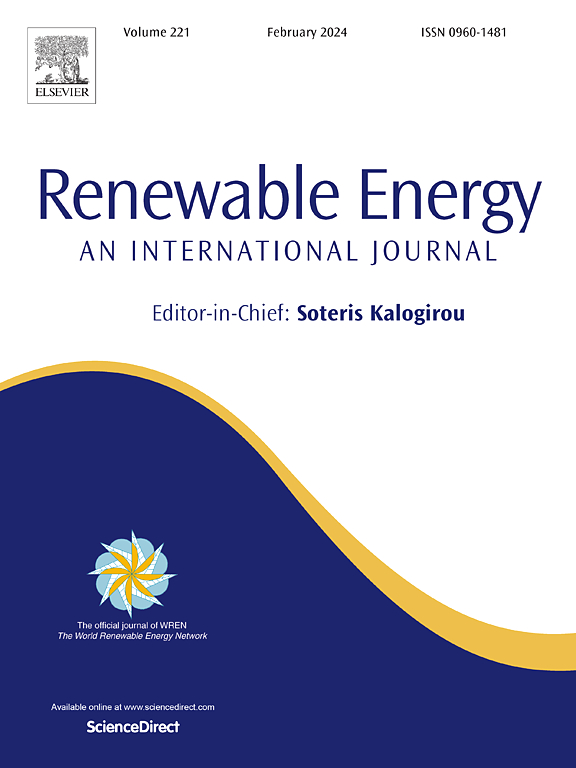Optimizing hydrocarbon yield from co-pyrolysis of Agave sisalana bagasse and multilayer plastic film wastes for sustainable fuel production using simplex-centroid mixture design and principal component analysis
IF 9.1
1区 工程技术
Q1 ENERGY & FUELS
引用次数: 0
Abstract
The production of alternative fuels to replace fossil-derived products constitutes a significant research topic, given the need for sustainable solutions that support energy transition and decarbonization of the transport sector. In this context, this pioneering study investigates the co-pyrolysis of Agave sisalana (sisal) bagasse with two types of multilayer plastic waste: polyethylene film with an aluminum barrier (PFA) and polyethylene film with an ethylene-vinyl alcohol barrier (PFE). The experiments were conducted in a micro-pyrolyzer coupled with gas chromatography and mass spectrometry (Py-GC/MS), using a simplex centroid mixture design to optimize compositions and principal component analysis (PCA) to interpret the data. While the isolated pyrolysis of sisal bagasse resulted in 58.78 % oxygenated compounds, co-pyrolysis with 50 % PFA provided a maximum yield of 91.39 % aliphatic hydrocarbons, representing a 2.97-fold increase compared to the pyrolysis of the isolated residue. PFA demonstrated a superior synergistic effect to PFE when combined with sisal bagasse. The results indicate that this combination can produce hydrocarbon-rich pyrolytic oil, significantly contributing to sustainable waste management and advancing the “waste-to-energy” concept by converting residual materials into alternative transportation fuels.
利用单纯质心混合设计和主成分分析优化龙舌兰甘蔗渣和多层塑料薄膜废弃物共热解的碳氢化合物产率,以实现可持续燃料生产
考虑到需要可持续的解决方案来支持能源转型和运输部门的脱碳,生产替代燃料以取代化石衍生产品是一个重要的研究课题。在此背景下,这项开创性的研究研究了龙龙花甘蔗渣与两种多层塑料废物的共热解:带有铝屏障的聚乙烯薄膜(PFA)和带有乙烯-乙烯醇屏障的聚乙烯薄膜(PFE)。实验采用气相色谱/质谱联用(Py-GC/MS),采用单形质心混合设计优化成分,并采用主成分分析(PCA)对数据进行解释。与分离后的甘蔗渣相比,分离后的甘蔗渣含氧化合物收率为58.78%,与分离后的甘蔗渣相比,PFA含量为50%共热解的脂肪烃最高收率为91.39%,比分离后的甘蔗渣高2.97倍。PFA与剑麻甘蔗渣的协同作用优于PFE。结果表明,这种组合可以产生富含碳氢化合物的热解油,显著有助于可持续废物管理,并通过将残余材料转化为替代运输燃料来推进“废物转化为能源”的概念。
本文章由计算机程序翻译,如有差异,请以英文原文为准。
求助全文
约1分钟内获得全文
求助全文
来源期刊

Renewable Energy
工程技术-能源与燃料
CiteScore
18.40
自引率
9.20%
发文量
1955
审稿时长
6.6 months
期刊介绍:
Renewable Energy journal is dedicated to advancing knowledge and disseminating insights on various topics and technologies within renewable energy systems and components. Our mission is to support researchers, engineers, economists, manufacturers, NGOs, associations, and societies in staying updated on new developments in their respective fields and applying alternative energy solutions to current practices.
As an international, multidisciplinary journal in renewable energy engineering and research, we strive to be a premier peer-reviewed platform and a trusted source of original research and reviews in the field of renewable energy. Join us in our endeavor to drive innovation and progress in sustainable energy solutions.
 求助内容:
求助内容: 应助结果提醒方式:
应助结果提醒方式:


